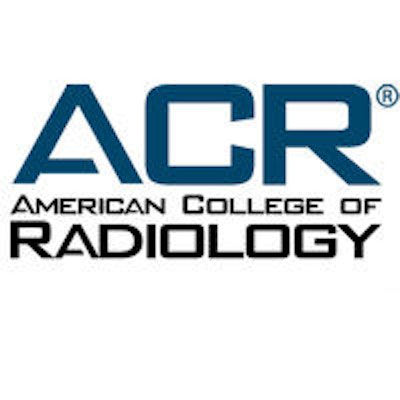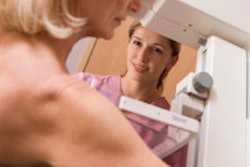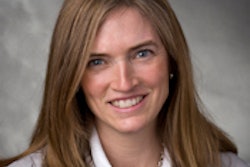
The American College of Radiology (ACR) is urging the U.S. Centers for Medicare and Medicaid Services (CMS) to reimburse providers for the extra cost of digital breast tomosynthesis. Women currently have to pay extra for tomosynthesis out of pocket, despite growing evidence of the technology's superiority over conventional digital mammography.
Breast tomosynthesis has shown promise as a major advance over digital mammography, with higher cancer detection rates and fewer patients needing to be recalled for additional testing, ACR said. But while there is strong evidence that tomosynthesis could have an important role in breast imaging, further studies are needed to assess the technology's effect on long-term clinical outcomes, including mortality.
That is only likely to happen, though, if radiologists can get reimbursed for the exams, resulting in greater clinical uptake of breast tomosynthesis.
"To facilitate such large-scale research, the technology must be widely available," ACR said in its statement. "The college urges the Centers for Medicare and Medicaid Services and private insurers to facilitate access to these exams by covering beneficiaries for tomosynthesis -- now that it has been shown to improve key screening parameters compared to digital mammography."
Not yet convinced
CMS is not yet convinced that specific breast tomosynthesis codes are needed. Last November, the agency said that tomosynthesis was part of digital mammography and could not be billed separately.
Since then, ACR has worked to develop CPT codes for tomosynthesis, which it presented to the American Medical Association's CPT Editorial Panel. It has also worked with that organization's Relative Value Scale Update Committee (RUC) to develop recommendations for relative value units (RVUs) using the Category 1 CPT codes for tomosynthesis. These codes require evidence that a procedure has been approved by the U.S. Food and Drug Administration (FDA) and is in general use.
In February, the CPT Editorial Panel accepted those codes; however, what CMS does next remains to be seen. Unfortunately, a procedure having a CPT code and RVU value does not guarantee coverage -- as evidenced by CMS' 2009 decision not to cover senior citizens for screening CT colonography, according to ACR.
"The RUC makes recommendations to CMS, and has done so, but CMS hasn't issued its final recommendations about whether breast tomosynthesis should be covered separately at all, much less for how much," Dr. Geraldine McGinty, chair of ACR's commission on economics, told AuntMinnie.com.
How are breast tomosynthesis procedures getting paid for right now? Medicare pays the same rate for tomo exams as it does for regular digital mammography, even though the technology costs more. Some private payors are reimbursing and some women are paying out of pocket to cover the difference, McGinty said.
Physician doubt
Not all physicians are convinced that breast tomosynthesis is everything it's thought to be, particularly for older women. In a study published July 1 in the Journal of the National Cancer Institute, researchers from Yale University found that Medicare is paying almost $150 million more a year on a national basis for "new" technologies such as full-field digital mammography (FFDM) and computer-aided detection (CAD) to screen women older than 75, without any significant change in the detection rate for early-stage cancer.
How does breast tomosynthesis fit into this? The JNCI study suggested there's a bigger problem in U.S. healthcare: the adoption of new technologies that haven't been proved to improve patient outcomes, according to lead author Dr. Cary Gross and colleagues.
ACR's statement is intended to address part of this concern -- that is, which subgroups of women would benefit most from tomosynthesis, considering factors such as age, breast density, and the frequency of exams, McGinty said. But that's hard to do if the technology isn't paid for.
"As physicians, we want to make the best judgment for our patients, but if payment for an exam like tomosynthesis isn't covered, it makes it harder," she said.




















